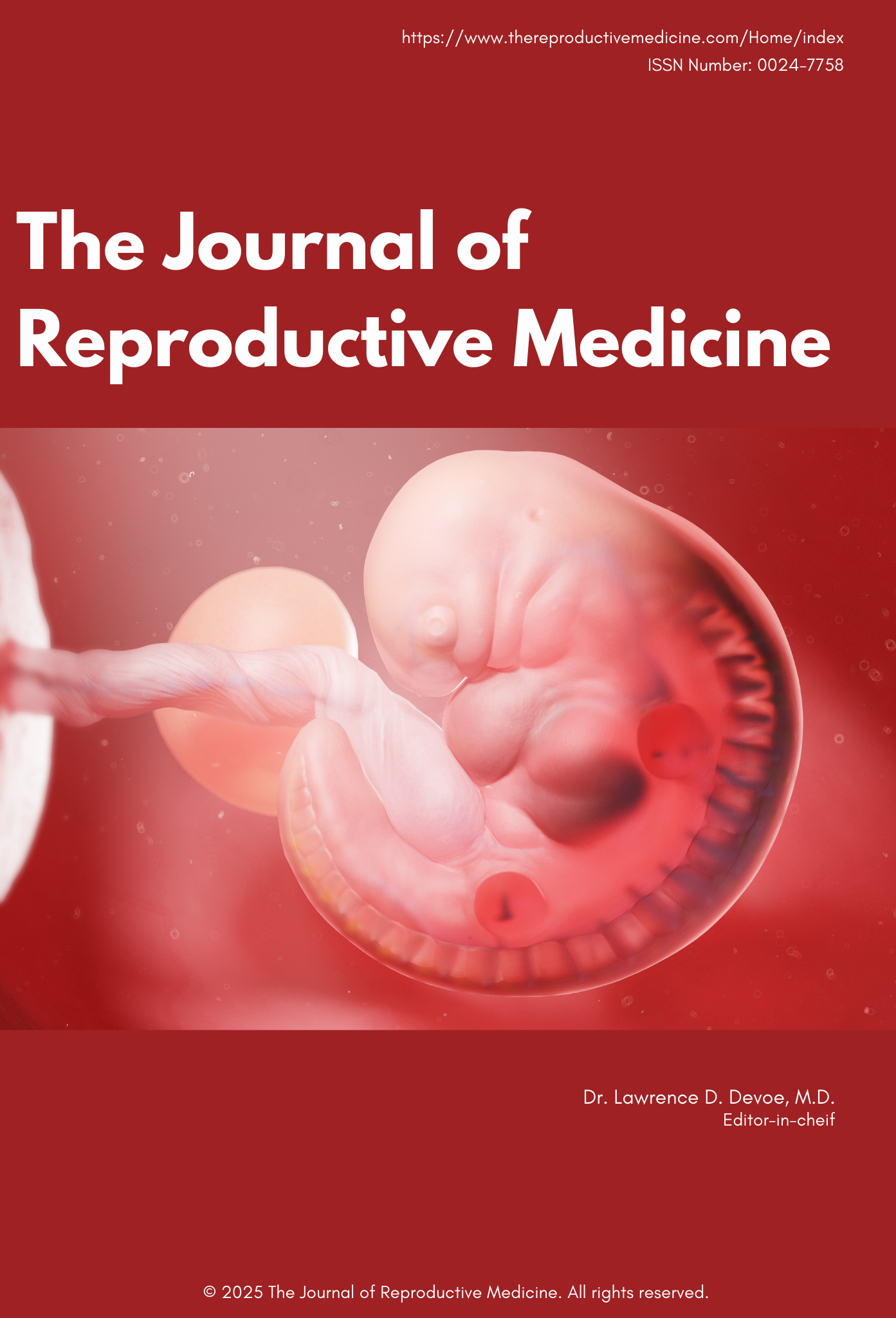Volume 51, Number 11, November 2006
| Editorial | |
| 857 | |
|
|
|
| Symposium | |
| 859 |
Barry W. Hancock, M.D.
There is a need for international guidelines for measurement and interpretation of hCG values, with emphasis on seeking advice from specialist centers before embarking on therapy.
|
|
|
|
| 861 |
Hidenori Kato, M.D., Ph.D., and Norio Wake, M.D., Ph.D.
Complete loss of TSSC3 expression in complete hydatidiform mole can provide a convenient diagnostic strategy to discriminate androgenetic complete hydatidiform mole from other molar pregnancies.
|
|
|
|
| 868 |
Hugh Mitchell, Ph.D., Kenneth D. Bagshawe, FRS, FRCP, Edward S. Newlands, Ph.D., FRCP, Philip Savage, Ph.D., F.R.C.P., and Michael J. Seckl, Ph.D., FRCP
The potential difficulties with hCG measurement and interpretation support the recommendation that all patients with the potential diagnosis of GTD be seen at a specialist trophoblast disease center.
|
|
|
|
| 871 |
Whitfield B. Growdon, M.D., Adam J. Wolfberg, M.D., M.P.H., Colleen M. Feltmate, M.D., Donald P. Goldstein, M.D., David R. Genest, M.D., Manuel E. Chinchilla, M.S., Ross S. Berkowitz, M.D., and Ellice S. Lieberman, M.D., Dr.P.H.
Elevated hCGlevels soon after molar evacuation identify a group of women with partial mole who are at increased risk of developing gestational trophoblastic neoplasia.
|
|
|
|
| 875 |
Biman Kumar Chakrabarti, D.G.O., F.A.C.S., F.I.A.M.S., Nidhu Ranjan Mondal, D.G.O., M.D., and Tanmoy Chatterjee, D.G.O., M.D.
Gestational trophoblastic tumors have an excellent prognosis if diagnosed and treated in time, and the potential for childbearing can be maintained.
|
|
|
|
| 879 |
Tony Dhillon, M.D., M.R.C.P., Carlo Palmieri, Ph.D., M.R.C.P., Neil J. Sebire, M.D., F.R.C.Path., Ian Lindsay, M.D., F.R.C.Path., Edward S. Newlands, Ph.D., F.R.C.P., Peter Schmid, M.D., Philip M. Savage, Ph.D., F.R.C.P., John Frank, M.D., M.R.C.P., F.R.C.R., and Michael J. Seckl, Ph.D., F.R.C.P.
18FDG-PET in GTN can identify sites of active disease missed by, and confirm sites of active disease found on, conventional imaging.
|
|
|
|
| 888 |
Gestational Trophoblastic Neoplasia: Clinical Trends in 8 Years at Hospital Universitario de Caracas
Rafael Cort�s-Charry, M.D., Lina M. Figueira, M.D., Victoria Garc�a-Barriola, M.D., Miriam de G�mez, M.D., Zhari Vivas, M.D., and Aleydah Salazar, M.D.
Since the mean age at presentation of gestational trophoblastic neoplasia at our center was 29 years, it is possible that age is not a determinant risk factor in the Venezuelan population.
|
|
|
|
| 892 |
M. Nurhalim Shahib, M.D., Ph.D., Djamhoer Martaadisoebrata, M.D., Ph.D., and Hidenori Kato, M.D., Ph.D.
The HASH2 gene is imprinted in complete hydatidiform moles but may show loss of imprinting during the progression to invasive mole or choriocarcinoma.
|
|
|
|
| 897 |
Rafael Cort�s-Charry, M.D., Lina M. Figueira, M.D., Luis Nieves, M.D., and Luis Colmenter, M.D.
18 FDG-positron emission tomography/computed tomography can be useful in the detection of metastases in selected cases of gestational trophoblastic neoplasia.
|
|
|
|
| 902 |
Colleen M. Feltmate, M.D., Whitfield B. Growdon, M.D., Adam J. Wolfberg, M.D., M.P.H., Donald P. Goldstein, M.D., David R. Genest, M.D., Manuel E. Chinchilla, M.S., Ellice S. Lieberman, M.D., Dr.P.H., and Ross S. Berkowitz, M.D.
The higher rate of persistence might be secondary to referral of patients who have undefined clinical characteristics that increase their risk for persistence.
|
|
|
|
| 907 |
Ma. Stephanie Fay S. Cagayan, M.D., and Maria Cresencia C. Gacoba, M.D.
At Philippine General Hospital, methotrexate is the first-line single-agent chemotherapy for low-risk gestational trophoblastic neoplasia.
|
|
|
|
| 919 |
Laurence A. Cole, M.D., Ph.D., Sarah A. Khanlian, M.P.H., Jaime M. Riley, Ph.D., and Stephen A. Butler, Ph.D.
hCG-H is produced by invasive cells, whether they are invasive cells of early pregnancy or those of choriocarcinoma or testicular germ cell cancer.
|






